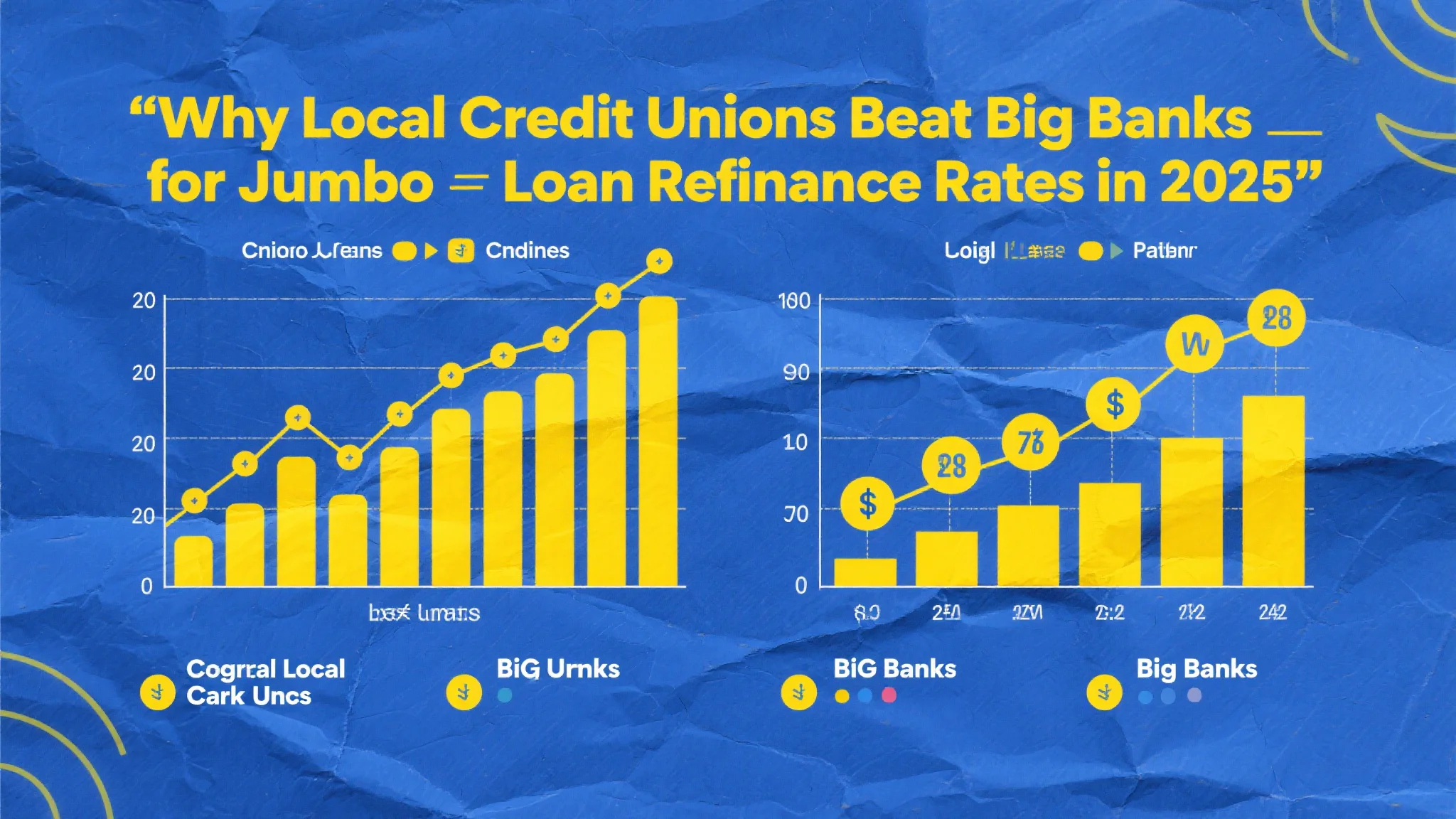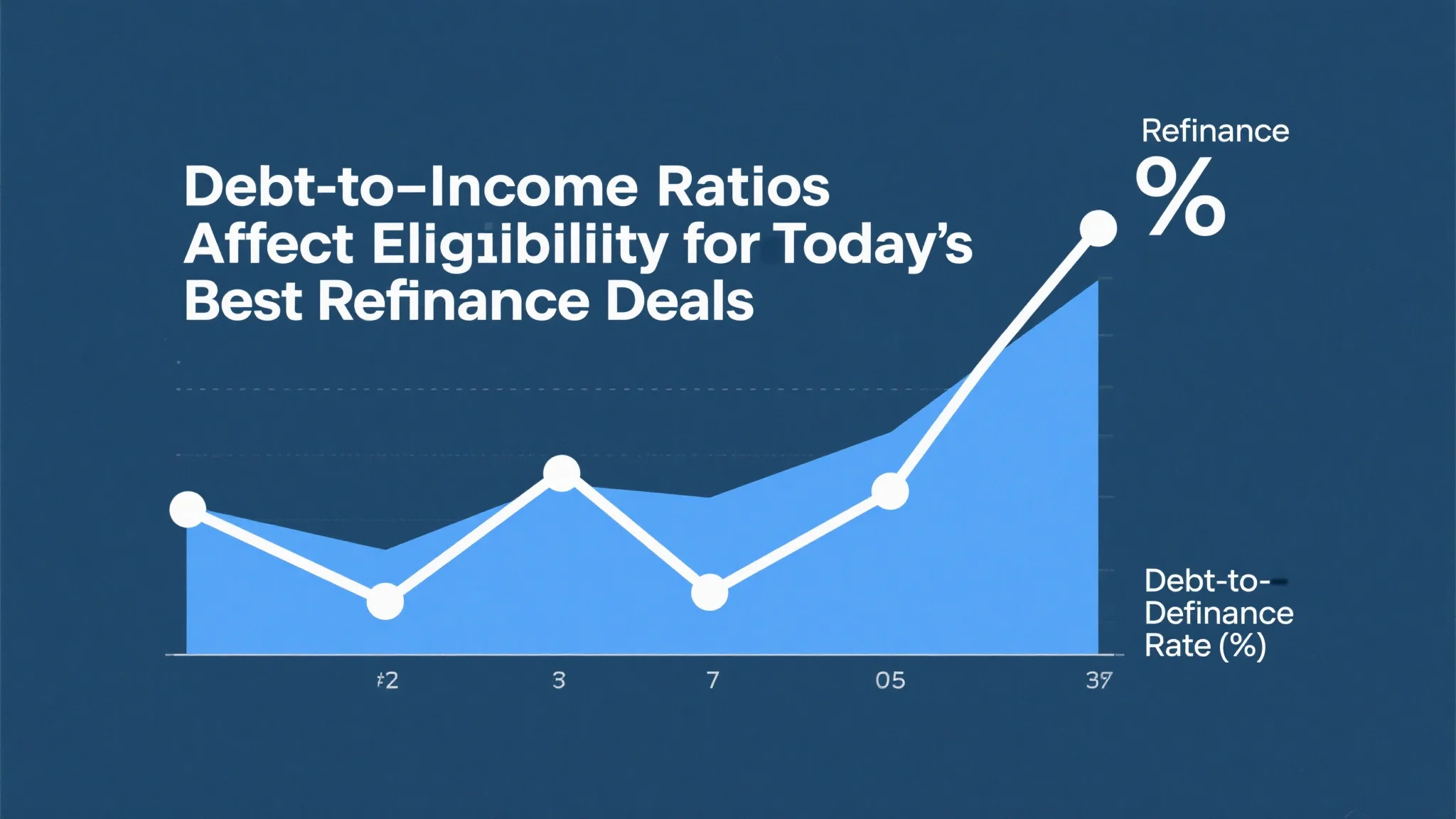The landscape of jumbo loan refinance rates has undergone a dramatic transformation in 2024, with local credit unions emerging as unexpected champions in providing competitive financing options that consistently outperform traditional big bank offerings. This shift represents a fundamental change in the mortgage lending ecosystem, where community-focused financial institutions have leveraged their operational advantages, member-centric business models, and streamlined decision-making processes to deliver superior value propositions for high-value property refinancing. The jumbo loan market, which encompasses mortgages exceeding the conforming loan limits set by the Federal Housing Finance Agency, has traditionally been dominated by large national banks with extensive capital resources and sophisticated underwriting capabilities. However, the competitive dynamics have shifted significantly as credit unions have invested heavily in technology infrastructure, expanded their lending capabilities, and developed specialized programs targeting affluent borrowers seeking refinancing solutions for properties valued above conventional loan thresholds. The rate advantages offered by credit unions often range from 0.125% to 0.50% below comparable big bank offerings, translating to substantial monthly payment savings and long-term interest cost reductions for borrowers with jumbo loan amounts. These savings become particularly pronounced on larger loan balances, where even modest rate differences can result in thousands of dollars in annual interest savings and tens of thousands in total cost reductions over the life of the loan. The structural advantages that enable credit unions to offer superior jumbo refinance rates stem from their cooperative ownership model, which eliminates the profit maximization pressures faced by publicly traded banks and allows them to pass cost savings directly to their members. Additionally, credit unions typically maintain lower overhead costs due to their community-focused operations, reduced marketing expenses, and streamlined organizational structures that prioritize member service over shareholder returns. The regulatory environment also favors credit unions in certain aspects of jumbo lending, as their non-profit status and member-owned structure provide operational flexibility that can be leveraged to offer more competitive pricing and terms. Furthermore, many credit unions have formed strategic partnerships with larger financial institutions or mortgage companies to access secondary market liquidity while maintaining control over the origination process and member relationship, enabling them to combine competitive pricing with personalized service that big banks struggle to match. The underwriting approach employed by credit unions often emphasizes relationship-based lending and comprehensive borrower evaluation that goes beyond automated scoring models, allowing them to approve qualified borrowers who might face challenges with big bank algorithms while still maintaining prudent risk management standards.
The comprehensive analysis of credit union vs bank refinance options reveals fundamental differences in business philosophy, operational structure, and customer service approaches that directly impact the borrower experience and overall value proposition for jumbo loan refinancing. Credit unions operate under a member-owned cooperative structure that fundamentally alters their incentive alignment compared to profit-driven banks, creating an environment where member satisfaction and long-term relationships take precedence over quarterly earnings targets and shareholder returns. This philosophical difference manifests in numerous practical advantages for jumbo loan borrowers, including more flexible underwriting criteria, personalized service from experienced loan officers, and decision-making processes that can accommodate unique financial situations or property characteristics that might be problematic for automated bank systems. The fee structures employed by credit unions typically demonstrate significant advantages over big bank offerings, with many institutions charging lower or eliminated origination fees, reduced third-party costs through preferred vendor relationships, and transparent pricing models that avoid the complex fee layering often associated with large bank mortgage products. The closing cost differences can be substantial, particularly on jumbo loans where percentage-based fees result in significant dollar amounts, with credit unions often saving borrowers thousands of dollars in upfront costs while maintaining competitive interest rates. The service quality differential between credit unions and big banks becomes particularly apparent during the application and underwriting process, where credit union members typically work with dedicated loan officers who have decision-making authority and deep understanding of the institution’s lending criteria, contrasting sharply with the call center approach and multiple handoffs common in big bank operations. This personalized service model enables credit unions to process applications more efficiently, provide clearer communication throughout the loan process, and accommodate borrower needs that might require flexibility or creative problem-solving. The technology infrastructure gap that historically favored big banks has narrowed significantly, with many credit unions now offering sophisticated online application platforms, mobile banking capabilities, and digital document management systems that rival or exceed the functionality provided by larger institutions. However, credit unions maintain the advantage of combining technological efficiency with human expertise, ensuring that complex jumbo loan scenarios receive appropriate attention from experienced professionals rather than being processed through purely automated systems. The geographic considerations also play a role in the credit union advantage, as local institutions often have superior knowledge of regional property markets, economic conditions, and regulatory environments that can influence underwriting decisions and pricing strategies. This local market expertise enables credit unions to make more informed lending decisions and offer competitive terms based on actual market conditions rather than broad national averages or conservative corporate policies that may not reflect local realities.

Identifying the best jumbo refinance lenders requires comprehensive evaluation of multiple factors beyond simple interest rate comparisons, including institutional stability, service quality, underwriting flexibility, and long-term relationship value that credit unions consistently demonstrate in the current market environment. The evaluation process must consider the total cost of borrowing, which encompasses not only the interest rate but also origination fees, discount points, third-party charges, and ongoing servicing quality that can significantly impact the overall borrower experience and financial outcome. Credit unions have distinguished themselves in this comprehensive evaluation by offering transparent pricing structures, competitive rates without excessive fee layering, and service quality that maintains consistency throughout the loan lifecycle rather than deteriorating after closing as often occurs with big bank mortgages. The institutional stability of credit unions has proven remarkably resilient, with their conservative lending practices, diversified membership bases, and regulatory oversight providing strong foundations for long-term lending relationships that borrowers can rely upon for future financial needs. The portfolio retention practices of many credit unions also benefit borrowers by ensuring continuity of service and relationship maintenance, contrasting with big banks that frequently sell loans to third-party servicers immediately after closing, potentially degrading the customer experience and complicating future interactions. The specialized jumbo loan programs offered by leading credit unions often include unique features such as interest-only payment options, flexible amortization schedules, and portfolio lending capabilities that enable them to accommodate borrower needs that fall outside conventional program parameters. These portfolio lending capabilities represent a significant competitive advantage, as credit unions can make lending decisions based on their own criteria and risk assessment rather than being constrained by secondary market requirements that limit big bank flexibility. The application and approval timelines offered by top credit union lenders frequently outperform big bank competitors, with streamlined decision-making processes and local underwriting authority enabling faster closings that can be crucial in competitive refinancing markets. The relationship banking approach employed by credit unions also provides long-term value through preferential pricing on future loans, priority service for existing members, and comprehensive financial planning support that extends beyond the mortgage transaction. The geographic reach limitations that historically constrained credit union lending have been largely eliminated through digital platforms and interstate banking agreements, enabling borrowers to access competitive credit union jumbo refinancing regardless of their physical location. The due diligence process for selecting optimal jumbo refinance lenders should include evaluation of the institution’s financial strength, regulatory compliance record, customer satisfaction ratings, and track record for honoring rate commitments and closing loans as promised. The most successful borrowers often establish relationships with multiple credit unions to compare offerings and maintain options for future refinancing needs, recognizing that the competitive landscape continues to evolve and that different institutions may offer advantages for different loan scenarios or market conditions.



